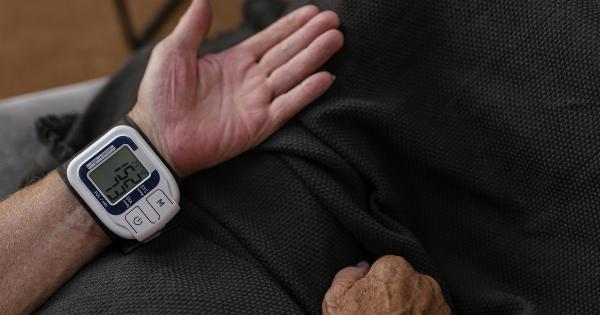Heart rhythm disorders, also known as arrhythmias, are a common cardiovascular condition affecting millions of people worldwide. These disorders involve abnormal electrical signals in the heart, leading to an irregular or abnormal heartbeat.
Arrhythmias can range from mild palpitations to life-threatening conditions, such as ventricular fibrillation.
Traditionally, treatment options for correcting heart rhythm disorders have mainly focused on medication, surgical procedures, or implantable devices like pacemakers and defibrillators.
However, recent advancements in technology have brought forth new possibilities for managing and treating these conditions. One such innovation is the use of light-emitting diodes (LEDs) for the correction of heart rhythm disorders.
The Potential Benefits of Light Therapy
Light therapy, also known as photobiomodulation, has gained attention in various medical fields for its potential therapeutic benefits.
While originally used in dermatology and wound healing, researchers have now started exploring its application in cardiovascular disorders, including heart rhythm disorders. The primary mechanism behind light therapy’s potential benefits lies in its ability to influence cellular function and signaling pathways.
Studies have shown that specific wavelengths of light can penetrate the skin and reach underlying tissues, including the heart. These lights can trigger specific biological responses in cells, such as improved energy production and reduced inflammation.
By influencing cellular function, light therapy has the potential to correct abnormal electrical signals in the heart, thereby restoring normal rhythm.
Advancements in LED Technology
LED technology has witnessed significant advancements in recent years. LEDs are now capable of emitting specific wavelengths of light, making them an ideal choice for targeted light therapy.
Moreover, LEDs are more energy-efficient, compact, and durable compared to traditional light sources. These advancements have opened up new possibilities for using LEDs in personalized medicine and delivering precise light therapy for correcting heart rhythm disorders.
Scientists and engineers are exploring different approaches to utilize LEDs for managing heart rhythm disorders. One such approach involves the development of wearable devices that incorporate LED technology.
These wearable devices can be worn on the chest or wrist and emit specific wavelengths of light to regulate heart rhythm. The portability and ease of use of these LED-based devices make them a promising tool for home-based therapy.
Regulating Heart Rhythm with LED Therapy
LED therapy for heart rhythm disorders typically involves the application of red or near-infrared light to specific areas of the chest or wrists.
The specific wavelengths used in LED therapy have been found to stimulate the mitochondria, the powerhouse of cells, leading to enhanced energy production. This, in turn, improves cellular signaling and overall cardiac function.
By applying LED therapy directly to the chest or wrist, the light can penetrate the skin and reach the underlying cardiac tissues. This targeted approach allows for precise delivery of light to the affected areas, helping to regulate heart rhythm.
As a non-invasive and drug-free treatment, LED therapy offers a potential alternative or complement to traditional treatment methods.
Research and Clinical Evidence
Several studies have explored the effectiveness of LED therapy in managing heart rhythm disorders. These studies have demonstrated promising results, suggesting that LEDs can help normalize heart rhythm and improve cardiac function.
However, more research is needed to fully understand and optimize the use of LEDs in this context.
A study published in the journal Heart Rhythm examined the effects of LED therapy in patients with atrial fibrillation, a common type of arrhythmia.
The researchers found that regular application of LED therapy led to a significant reduction in arrhythmia episodes and improved heart rate variability. The study highlighted the potential of LEDs as an adjunct therapy for atrial fibrillation management.
In another study published in the International Journal of Cardiology, researchers investigated the effects of LED therapy in patients with ventricular arrhythmias.
The results showed that LED therapy led to a reduction in both the frequency and severity of ventricular arrhythmias, suggesting its effectiveness in managing these life-threatening conditions.
Combining LED Therapy with Traditional Treatments
LED therapy is not meant to replace traditional treatments for heart rhythm disorders but rather complement them. It can be used as an adjunct therapy to medication, surgical interventions, or implantable devices.
The combination of LED therapy with traditional treatments may enhance the overall efficacy of the treatment and improve patient outcomes.
Furthermore, LED therapy has the potential to reduce the reliance on medication and invasive procedures, thereby minimizing associated side effects and risks.
It offers a non-invasive and drug-free approach for managing heart rhythm disorders, providing patients with additional options and improving their quality of life.
Conclusion
The use of LEDs for correcting heart rhythm disorders represents an exciting and innovative approach in cardiovascular medicine.
With advancements in LED technology and our understanding of the potential benefits of light therapy, this field is rapidly progressing. While further research is warranted, early studies and clinical evidence indicate the efficacy of LED therapy in managing heart rhythm disorders.
LED therapy offers a non-invasive, drug-free, and convenient option for patients with arrhythmias. It has the potential to regulate heart rhythm, improve overall cardiac function, and complement traditional treatment approaches.
As technology continues to evolve, LEDs could become an integral part of personalized medicine, providing patients with safer and more effective options for managing heart rhythm disorders.


























